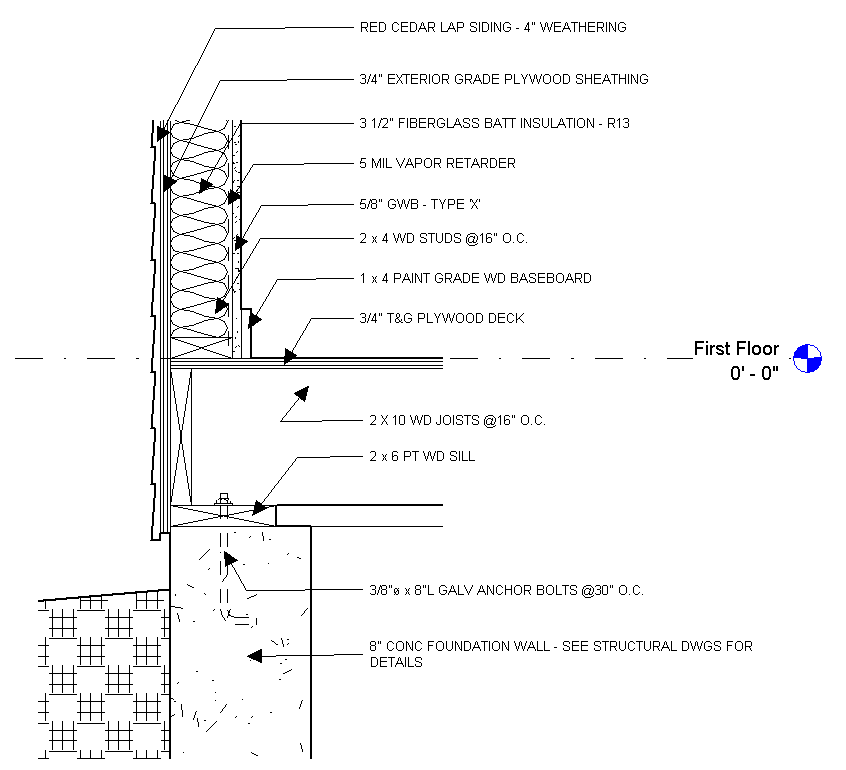Details bridge the gap between the design and building reality, conveying information to the builders and contractors on how a design should be built.
Revit LT is a building information modeler. You construct a project as a digital representation of the physical objects in the real world. However, not every component needs to be modeled in 3D. Architects and engineers create standard details to represent how materials in the larger project are constructed. Details are vital additions to a project, because they show how materials should interconnect.
- A detail view contains elements from the building information model.
- A drafting view is a sheet of paper that is not directly associated with the building information model.
There are 2 main types of views you can create for detailing: detail views and drafting views.
When to use details
- To convey detailed information
- To show features that do not exist for components used in a project
- To draft lines in a drafting view with no reference to the model, such as signage or typical details
- To trace over underlay elements in the view
- To detail a view with part of the model visible, such as in a wall section or callout
- To show turning vanes in an elbow, for example, when turning vanes are not supported by the elbow component

Foundation detail sketched with Revit LT detailing tools
